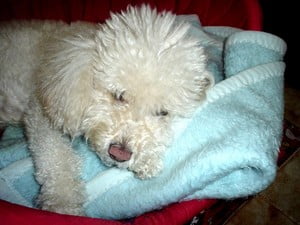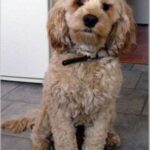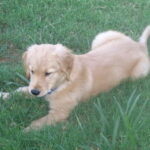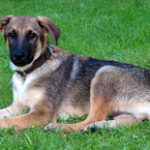Approximately fifteen percent of people have pet allergies according to recent statistics. Dog allergies are quite common and many people believe that their allergies will prevent them from owning a pet dog. In truth, there are many dog breeds out there that are classified as “hypoallergenic” and relatively safe for the allergy sufferer. Hypoallergenic dogs produce extremely small amounts of dander, one of the reasons behind the bad allergic reactions. There is no single breed of dog considered to be completely safe for allergy sufferers, but there are breeds that tend to cause less of a problem.
1. Poodle: All of the varieties and cross breeds of poodle are excellent for allergy sufferers. In general the Poodle is considered to be smart, watchful, highly energetic, and a people pleaser. The coat is dense and can be course and wooly or soft and wavy. The breed is considered a non-shedding breed but they do need extensive grooming. They must get regular baths and be clipped every six to eight weeks
2. Schnauzer: This includes the standard, miniature, and giant Schnauzers. In general Schnauzers are intelligent, alert, and loyal with a strong sense of smell. The coat is wiry and easy to look after. The undercoat is very dense and needs to be brushed daily with a short wire brush. The coat of the standard and miniature variety should be clipped twice a year, in the spring and in the fall. The Giant Schnauzer needs to be clipped four times a year. Because of the manageable coat, this breed doesn’t have a strong odor and sheds little.
3. Portuguese Water Dog: This breed is generally friendly, intelligent, affectionate, water-loving, energetic, and loyal. They are also said to be excellent with children. The breed has hair that is either wavy or curly; with many have both wavy and curly hair on their bodies. The coat does grow more slowly than a poodle, but should be clipped every two months.
4. Soft-Coated Wheaten Terrier: The Wheaten is an alert, happy, strong, intelligent, and friendly dog. They make good watchdogs and are great for families with children. They rarely bark unnecessarily. It is said they have a puppy attitude that stays with them into old age. The coat is like human and poodle hair in that it continues to grow while shedding very little, just a few hairs daily if properly groomed. Do not brush this breed as it can make the coat fuzzy looking. Instead you should comb the coat daily with a medium-toothed comb to keep tangles at bay.
5. Maltese: The Maltese is generally affectionate, seemingly fearless, energetic, and playful. They tend to be “snappy” so this breed is not recommended for younger children. They are normally very good with older children however. The long, soft coat should be GENTLY combed and brushed daily.
6. Irish Water Spaniel: This breed is active, intelligent, alert, and has the reputation of being a clown and a people-pleaser. These dogs can be great for a family with children with proper socialization. They need water to swim, an activity they are specialized for. The crisp, curly coat is a sold brown or puce color that has a purple tent. The Irish Water Spaniel requires a lot of grooming since the coat will tend to mat.
7. Kerry Blue Terrier: Kerries are alert, playful and have a way of making people laugh. They like to roughhouse and are considered a good and loving family dog. The breed generally likes to be around his family and is a good watchdog that will not attack without provocation. This breed sheds little to no hair and is odorless, even when wet. Kerries needs to be combed and bathed once a week since the beard can get smelly and packed with food and dirt without proper grooming.
8. Chinese Crested (hairless): This breed is generally affectionate, energetic, playful, and cuddly. They are very sweet with children especially. The Hairless Chinese Crested is a very clean dog, with no odor. They are not prone to fleas or ticks but can be susceptible to dry skin, sunburn, and acne. Bathing at least 2 times a week and frequent massages with oil or crème can help to avoid some of these skin conditions and keep the skin supple.
9. Xoloitzcuintli: Also known as the Mexican Hairless or Xolo, this breed is a rare hairless breed of dog that comes in three sizes: toy, miniature and standard. It also comes in two varieties, coated and hairless. The hairless variety is very hairless and the coated has only a very short, sleek, clean coat much like that of a Doberman. This breed is very easy to groom and care for. For the hairless you will want to bathe and lotion once or twice and month (only as needed). Skin problems can and do arise from over lotioning and over bathing. Sunscreen should also be used in very sunny weather. Brush the coated variety daily to weekly to keep shedding to a minimum. Both varieties are great for the allergy sufferer.
10. Bichon Frise: This breed tends to be lovable, smart, playful and happy. The Bichon Frise if a “puffball” that makes a good watch dog and loves attention. This type of dog has a textured outer coat with a fine, soft, silky undercoat. They should be groomed frequently, bathed at least once a month, and visit a professional groomer at least once every three months as they are prone to skin problems and allergies.
11. Bedlington Terrier: Bedlingtons are loyal, energetic, headstrong, brave, and can be “high strung.” They like to bark generally and can run very fast. This dog looks like a lamb due to its non-shedding coat that has a wooly appearance. The coat is a combination of soft and harsh hairs that tend to curl and require a clipping every six weeks to stay in good shape.
12. Yorkshire Terrier: Yorkies are said to be smart, playful, independent and brave. They are also wary of strangers. This coat, which sheds very little, needs regular grooming. The coat should be clipped and needs to be combed and brushed daily. This breed of dog will normally have a “topknot” to keep the hair out of the eyes.
13. Shih Tzu: This breed is alert, spunky, happy, and sometimes arrogant. Shih Tzu’s are also wary of strangers and can be “snappy” when surprised. Because of this trait they do not normally do well with small children that are unsteady on their feet. Shih Tzu’s are covered with a long haired outer coat and a woolly undercoat. This breed requires a daily grooming with a bristle brush.
14. Peruvian Inca Orchid: Also called the Peruvian Hairless Dog and Moonflowers, this dog can easily be confused with the Xoloitzcuintli. These dogs prefer the night to the day and they do not like to be left alone. This breed is generally affectionate with family, calm, intelligent and very fast. It has skin that is soft and pliable that must be protected from the sun and cared for appropriately. It is better to not exfoliate the skin as this can make the skin for susceptible to injury. You do want to keep the skin from becoming dry by using lotion, creams, or oil however. Bathe with a gentle soap. This is a very clean breed that has no odor and is not prone to fleas.
15. American Hairless Terrier: This dog will often be mistaken for a hairless Chihuahua. They are generally good with children, especially if raised with them. They aren’t “yappy”, and they are normally very playful and quick. Unlike other breeds, this dog will break out in a sweat when hot or scared. The AHT will need to be protected from the sun and should be bathed one to three times a week. Studies have found this breed to be the best for people with dog allergies. Individuals who can’t tolerate some of the other hypoallergenic breeds can tolerate the American Hairless Terrier in most instances.
For a more complete list and for more information about each of the breeds listed please visit www.dogbreedinfo.com. Each of the breeds listed are considered to be a hypoallergenic breed. That is not to say that your allergies won’t act up with these breeds. No dog is going to be completely free of dander or totally hypoallergenic. It is always best to test out a dog before adopting or making a purchase. This can be done by staying in a closed in space (such as a car) for an extended period of time to see if your allergies are affected. Hopefully one of these breeds can work for you and your family.







